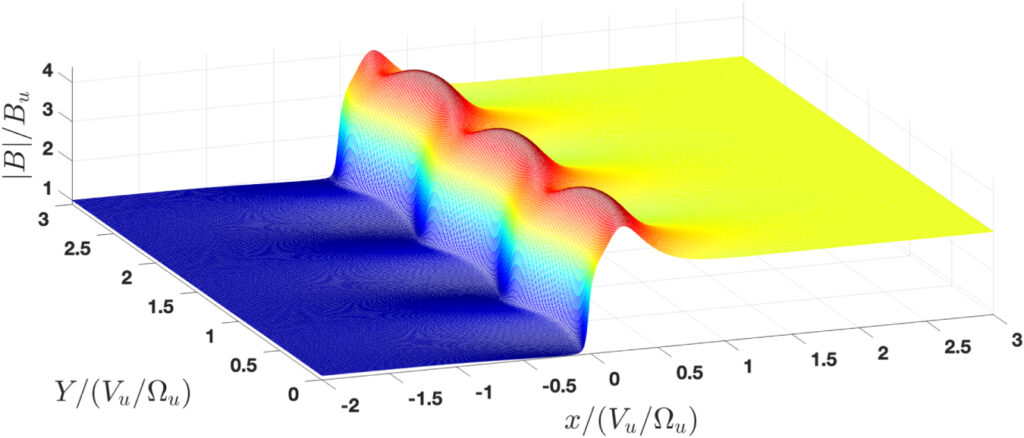In a collisionless shock the energy of the directed flow is converted to heating and acceleration of charged particles, and to magnetic compression. In low-Mach number shocks the downstream ion distribution is made of directly transmitted ions. In higher-Mach number shocks ion reflection is important. With the increase of the Mach number, rippling develops, which is expected to affect ion dynamics. Using ion tracing in a model shock front, downstream distributions of ions are analyzed and compared for a planar stationary shock with an overshoot and a similar shock with ripples propagating along the shock front. It is shown that rippling results in the distributions, which are substantially broader and more diffuse in the phase space. Gyrotropization is sped up. Rippling is able to generate backstreaming ions, which are absent in the planar stationary case.

Full Article:
Gedalin, M. (SHARP), Pogorelov, N. V. and Roytershteyn, V. (2023). Scattering of Ions at a Rippled Shock. The Astrophysical Journal, 951, doi: 10.3847/1538-4357/acd63c
License: CC BY 4.0





